| dc.contributor.author | Rojas Aguirre, Daniel Felipe | spa |
| dc.date.accessioned | 2017-05-22T09:11:29Z | spa |
| dc.date.available | 2017-05-22T09:11:29Z | spa |
| dc.date.issued | 2016-06-07 | spa |
| dc.identifier.uri | https://bdigital.uniquindio.edu.co/handle/001/333 | spa |
| dc.description.abstract | The present research "Conceptions of Psychomotricity of the Basic Primary School Teacher" was titled having the general goal of unveiling the conceptions of those teachers. Interest in investigating these conceptions arouse from the lack of teachers in the area of physical education in elementary school and the lack of basic knowledge about it. The approach that was handled in this study is purely qualitative and the type of research which is founded on is microethnography. The study population was a group of teachers of fifth grade in public schools of the city of Armenia and, an in-depth interview was conducted as a data collection tecnique. From the findings and the existing theory on motor skills the investigator was able to answer the research question. Le Boulch was taken as a main point of reference for him being the father of educational psychomotricity, this approach being related with movement, skills and abilities, human motricity; and with some different subjects such as arts, mathematics, spanish, among others. Those were the conceptions of the teachers of fifth grade, including the one on psychomotor development. These conceptions were analyzed and linked together, to then give the respective recommendations. | eng |
| dc.description.abstract | La presente investigación se tituló “Concepciones de Psicomotricidad del Profesor de Básica Primaria” teniendo como objetivo general develar las concepciones de dichos docentes. El interés por investigar sobre estas concepciones surge por la carencia de docentes del área de educación física en la escuela primaria y lo fundamental de los saberes al respecto. El enfoque que se manejó en esta investigación es netamente cualitativo y el tipo de investigación es la micro etnografía. La población estudiada fue un grupo de profesores de quinto grado de primaria de los colegios públicos de la ciudad de Armenia y se realizó una entrevista en profundidad como técnica para la recolección de la información. Desde los hallazgos y la teoría existente sobre la psicomotricidad se logró responder a la pregunta de investigación. Se tomó como referente a Le Boulch por ser el padre de la psicomotricidad educativa, siendo ésta relacinacionada con el movimiento, las habilidades y destrezas, la motricidad humana; y con diferentes materias como artística, matemáticas, español, entre otras. Esas fueron las concepciones de los profesores de quinto grado de primaria incluyendo el desarrollo psicomotriz. Se analizaron y se relacionaron dichas concepciones, para así dar las respectivas recomendaciones. | spa |
| dc.description.tableofcontents | Tabla de Contenido.
Resumen.
Abstract.
Introducción.
1. Título. ............................................................................................................................................ 13
2. Area problemática. ......................................................................................................................... 14
2.1. Contexto del problema. .......................................................................................................... 14
2.2. Antecedentes ......................................................................................................................... 20
Internacionales. ............................................................................................................................. 20
Nacionales. .................................................................................................................................... 29
Locales. ......................................................................................................................................... 32
2.3. Pregunta de investigación. ..................................................................................................... 34
3. Objetivos ....................................................................................................................................... 35
3.1. General. ................................................................................................................................. 35
3.2. Específicos. ............................................................................................................................ 35
4. Marco de referencia ....................................................................................................................... 36
4.1. Capítulo I: Psicomotricidad ..................................................................................................... 36
4.2. Capítulo II: Concepciones. ...................................................................................................... 41
4.3. Capítulo III: Educación Física. .................................................................................................. 43
4.4. Capitulo IV: Psicomotricidad, concepciones y educación física: Una estrecha relación teórica del conocimiento. .............................................................................................................................. 50
5. Metodología .................................................................................................................................. 52
5.1. Enfoque de Investigación. ...................................................................................................... 52
5.2. Tipo de Investigación.............................................................................................................. 53
5.3. Diseño de investigación. ......................................................................................................... 54
5.4. Población. .............................................................................................................................. 55
5.5. Unidad de trabajo. ................................................................................................................. 56
5.6. Criterios de inclusión. ............................................................................................................. 56
5.7. Técnicas e instrumentos de recolección de la información. .................................................... 57 5.8. Unidad de Análisis. ................................................................................................................. 58
5.9. Análisis de información. ......................................................................................................... 59
5.10. Principios éticos de investigación. ...................................................................................... 60
6. Hallazgos. ...................................................................................................................................... 62
6.1. Categoría I: Relación del movimiento con la psicomotricidad en educación física ................... 62
6.2. Categoría II: La relación de la psicomotricidad con la motricidad humana .............................. 72
6.3. Categoría III: El desarrollo psicomotriz en la educación física .................................................. 79
6.4. Categoría IV: La clase de educación física: forma ideal para el desarrollo de la psicomotricidad 86
7. Relación de los hallazgos. .............................................................................................................. 93
8. Recomendaciones .......................................................................................................................... 96
9. Bibliografía. .................................................................................................................................. 97
10. Anexos. ................................................................................................................................... 100 | spa |
| dc.format.mimetype | application/pdf | spa |
| dc.language.iso | spa | spa |
| dc.rights | Derechos Reservados - Universidad del Quindío | spa |
| dc.rights.uri | https://creativecommons.org/licenses/by/4.0/ | spa |
| dc.subject | Psicomotricidad, concepciones, educación física, micro etnografía | spa |
| dc.title | Concepciones de psicomotricidad del profesor quinto grado de primaria de los colegios públicos de la ciudad de armenia. | spa |
| dc.type | Trabajo de grado - Pregrado | spa |
| dc.rights.accessrights | info:eu-repo/semantics/closedAccess | spa |
| dc.rights.creativecommons | Atribución 4.0 Internacional (CC BY 4.0) | spa |
| dc.type.coar | http://purl.org/coar/resource_type/c_7a1f | spa |
| dc.type.driver | info:eu-repo/semantics/bachelorThesis | spa |
| dc.type.version | info:eu-repo/semantics/acceptedVersion | spa |
| dc.contributor.corporatename | Universidad del Quindío - Colombia - Asesor - Restrepo González, Ana María | spa |
| dc.description.degreelevel | Pregrado | spa |
| dc.publisher.faculty | Licenciado en Educación Física y Deportes | |
| dc.type.content | Text | spa |
| dc.type.redcol | https://purl.org/redcol/resource_type/TP | spa |
| dc.type.coarversion | http://purl.org/coar/version/c_ab4af688f83e57aa | spa |
| dc.rights.coar | http://purl.org/coar/access_right/c_14cb | spa |













